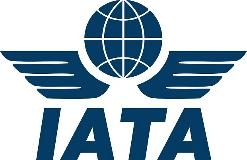The International Air Transport Association (IATA) called for new thinking on the relationships between partners in the air transport value chain in order to attract the US$ 4-5 trillion that will be needed over the next 20 years to meet the growing demand for aviation-enabled connectivity. The call came in an IATA study supported by analysis from McKinsey & Company, “Profitability and the Air Transport Value Chain”, which shows that returns on capital invested in airlines have improved in recent years, but are still far below what investors would normally expect to earn.
“The airline industry has created tremendous value for its customers and the wider economies we serve. Aviation supports some 57 million jobs globally and we make possible US$ 2.2 trillion worth of economic activity. By value, over 35 per cent of the goods traded internationally are transported by air. But in the 2004-2011 period, investors would have earned US$ 17 billion more annually by taking their capital and investing it in bonds and equities of similar risk. Unless we find ways to improve returns for our investors it may prove difficult to attract the US$ 4-5 trillion of capital we need to serve the expansion in connectivity over the next two decades, the vast majority of which will support the growth of developing economies,” said Tony Tyler, IATA’s Director General and CEO.
During the 2004-2011 period, returns on capital invested in the airline industry worldwide averaged 4.1 per cent. This is an improvement on the average of 3.8 per cent generated in the previous business cycle over 1996-2004. However, this is nowhere near the average cost of capital of 7.5 per cent which represents the return on capital that investors would expect to earn by investing in assets of similar risk outside the airline industry. While some airlines have consistently created value for equity investors, these are few in number. On average industry returns were just sufficient for the industry to service its debt, with nothing left to reward equity investors for risking their capital.
The study showed that over the past 40 years virtually all industries have generated higher returns on invested capital (ROIC) than the airline industry. Moreover, airlines are the least profitable segment of the air transport value chain while other segments consistently generate good returns for their investors. The biggest cost for airlines today is fuel and companies in this sector benefited from an estimated US$ 16-48 billion of their annual net profits generated by air transport. The most profitable part of the rest of the value chain is in distribution, with the computer reservation systems businesses of the three global distribution system companies generating an average ROIC of 20 per cent, followed by freight forwarders with an ROIC of 15 per cent.
However, high profits and inefficient costs in the value chain are only part of the explanation for persistently poor airline profitability. In fact over the past 40 years the airline industry has more than halved the cost of air transport in real terms, owing to better fuel efficiency, asset utilization and input productivity. Yet these efficiency gains have ended up in lower air transport yields rather than improved investor returns. That has created tremendous value for customers and the wider economy, but has left equity investors in the airline industry unrewarded. The study shows this aspect of the airlines’ performance lies more in the industry’s highly fragmented and unconsolidated structure and the nature of competition, rather than in the supply chain, although distribution is a key part of the puzzle.
“More effective partnerships are required among stakeholders in the air transport industry. Efficiency gains are a win-win for all concerned. We have seen that with the adoption of 100 per cent e-ticketing and the introduction of global self-service standards. Not only did partners in the industry benefit, but consumers gained great value through more efficient and convenient processes. This study points to the active collaboration needed to find even more such solutions,” said Tyler.
An agenda for governments is also outlined in the study. “Smart regulation is needed from governments around the world in order to maximise the economic benefits of connectivity—jobs and growth. Unfortunately, high taxation and poorly designed regulation in many jurisdictions make it difficult for airlines to develop connectivity. On top of the cost issues, airlines also face a hyper fragmented industry structure owing to government policies that discourage cross-border consolidation. There is plenty of room for some fresh thinking on all accounts,” Tyler concluded.







